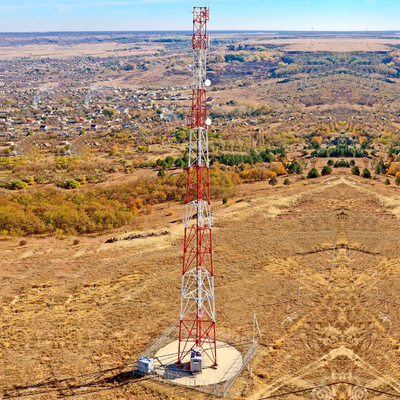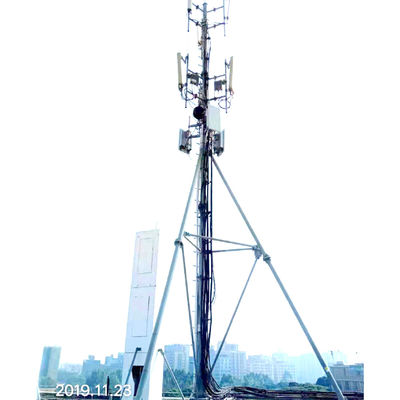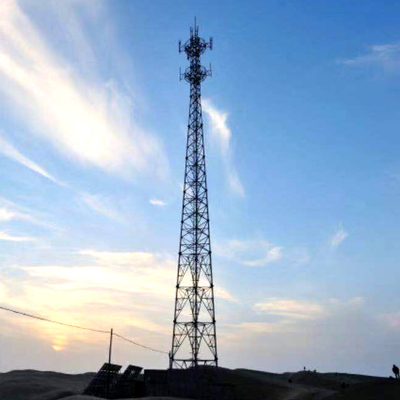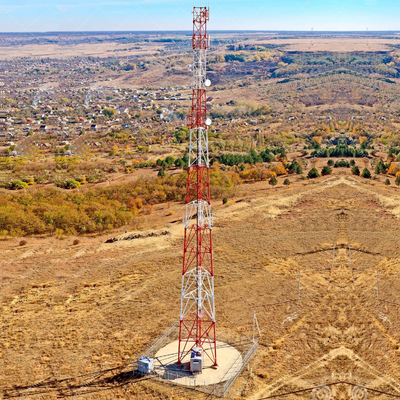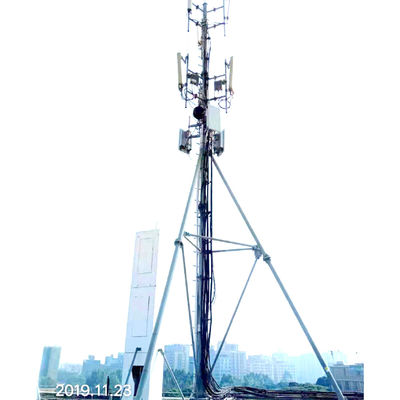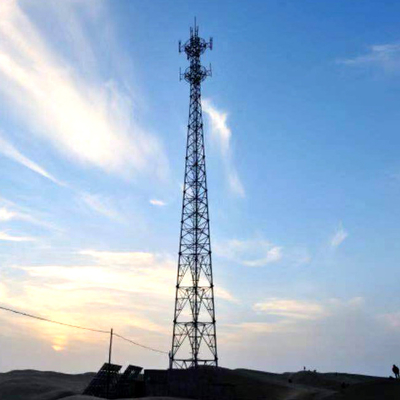-
Telecom Steel Tower
-
Transmission Steel Tower
-
Camouflaged Cell Towers
-
Galvanised Street Light Pole
-
Lattice Steel Towers
-
Solar Panel Support Structure
-
Galvanized Steel Structures
-
Traffic Signal Light Pole
-
Steel Tubular Pole
-
Rooftop Antenna Tower
-
High Mast Light Tower
-
Guyed Wire Towers
-
CCTV Camera Poles
45 Self-support Galvanized Steel Mast Structure BTS Communication Lattice Tower
| Place of Origin | China |
|---|---|
| Brand Name | GUANGXIN |
| Certification | ISO9001 |
| Model Number | SST-401 |
| Minimum Order Quantity | 1 set |
| Price | USD1100 to USD1400 per ton |
| Packaging Details | bundles |
| Delivery Time | 20-60 days depending on order quantity |
| Payment Terms | T/T, L/C, Western Union, MoneyGram |
| Supply Ability | 500 sets monthly |

Contact me for free samples and coupons.
Whatsapp:0086 18588475571
Wechat: 0086 18588475571
Skype: sales10@aixton.com
If you have any concern, we provide 24-hour online help.
x| Height | 30-110m | Base Type | Steel Framed Concrete Foundations |
|---|---|---|---|
| Coating | Hot-dip Galvanized | Design | 3 Or 4 Legs Lattice Mast |
| Design Lifespan | 20-50 Years | Steel Type | Weldable Structural Low Carbon Steel |
| Steel Grade | Q355B Or S355JR, Q235B Or ASTM A36 | Life Span | Over 50 Years |
| Warranty | 3 Years For Free Spare Parts For Replacement | Bolts And Nuts | Grade 6.8 Or 8.8 |
| Platforms | 1-4 Platforms Or Without Platform | Structure Type | Triangular Or Square Or Polygonal Section |
| Terrain Category | A, B, C | Wind Speed | 50-280km/h (3s Gust) |
| Delivery Time | 20 To 60 Days Subject To Order Quantity |
Good quality Customized height 30-60m self-support Galvanized Steel Telecommunications towers
Guangzhou Guangxin Communication Equipment Co., Ltd. was founded in 2009 and located in Guangzhou which is the largest city in Southern China. We can produce communication towers, power transmission towers and poles, camouflaged towers, street light poles, traffic cantilevers and gantries as well as other related steel structures according to your designs, specifications and drawings.
We offer a diverse array of communication towers designed to meet the evolving needs of industries and communities. Our self-supporting and guyed marvels stand tall as beacons of technological advancement, providing reliable infrastructure for broadcasting and telecommunications. These towers boast robust engineering, ensuring stability and efficiency in signal transmission.
Descriptions
Communication Tower means a structure designed to support antennas for telecommunications and broadcasting and may include television, cellular phone, or wireless internet or radio signals.
5G towers are telecommunications sites capable of transmitting 5G "new radio" signals for wide area coverage. They are typically 50 to 200 feet tall and are designed to blend into the natural environment to limit aesthetic impact.
5G cell towers use a combination of low, medium and high frequency bands for a variety of connectivity use cases. For example, macro cellular antennas can be mounted on towers to effectively provide low-band cellular coverage to millions of devices over a large area. Low-band 5G can travel great distances and penetrate walls, windows and other physical barriers.
A transmission tower is a tall structure, usually a lattice tower made of steel that is used to support an overhead power line. In electrical grids, transmission towers carry high-voltage transmission lines that transport bulk electric power from generating stations to electrical substations, from which electricity is delivered to end consumers; moreover, utility poles are used to support lower-voltage sub-transmission and distribution lines that transport electricity from substations to electricity customers.
![]()
50m TV and Radio Broadcasting Tower Mast
What type of structure is a cell phone tower?
A cell phone tower is typically a steel pole or lattice structure that rises hundreds of feet into the air.
Due to the rising popularity of cell phones over the last 15 years, communication towers can now be located almost anywhere you look. However, it’s important to note that not all cell towers are the same. There are four different types of communication towers that can be used to transmit cellular signals. There are many different types of cell towers that can be installed depending on your specific purposes.
Following is some popular types of Communications Towers:
Lattice Towers
Also referred to as self-supporting towers or free standing tower, lattice towers are typically made from steel and constructed in a triangular (3 legs) or square (4 legs) shape. These towers often offer the most stability and flexibility as compared to other cell tower types.
Our Self-Supporting Structures are available with either tubular or solid round legs in three or four-leg models, they are capable of carrying moderate to heavy accessory loads. These towers come individually packed with each set of section bracing clearly identified. In addition to offering tubular or solid round legs, we provide self-supporting towers with angle legs when requested. They are available in heights that meet your specifications.
Guyed Wire Tower
A guyed tower is a light- to heavy-weight communication tower constructed with straight rods aligned in a triangular or square form, but supported with wires at all angles. Guyed towers are especially tall, reaching heights as high as 2,000 feet, and are typically used to hold antennas high off the ground allowing for greater signal strength and cell reception.
In addition to cellular use, they can also serve for radio and television purposes. They are ideal for rural customers who require maximum height at an economical cost.
The other type of towers is mobile towers which may include telescoping towers that tilt up or fold down. They are suitable for emergency communications, two-way radios, remote base stations and cellular on wheels (COW) applications. Rooftop towers are also popular for the 5G microcell stations.
Monopole Towers
A single tubular mast comprises this type of cell tower; because of the instability that comes with the use of a single pole, the height of these structures will not exceed 200 feet. A benefit of this tower type is that it requires little ground space to erect, and the antennae are simply mounted to the top-exterior of the mast.
Steel tapered monopoles are designed to carry wireless and microwave communication equipment, constructed of slip-sleeve tapered sections, and made of high-strength steel with minimum yield strength of 65 ksi. Each order includes steel templates to assure proper base bolt alignment. Our monopoles have step bolt working rings at handhole levels and loop step bolts at all working points. They are available 12, 16, or 18-sided and in heights that meet your specifications. A factory-applied finish coat is available upon request.
Stealth Towers or Camouflaged Towers
Stealth towers or camouflaged towers are also called Concealed towers that can be deployed to satisfy zoning regulations. They are more expensive than other towers because they require additional material to create a concealed appearance. Their smaller size typically makes them less efficient.
Have you ever seen a painted metal tree standing tall on the side of a highway? The bionic tree towers look like trees in appearance, it is one familiar example of a stealth tower. This type of structure is used whenever there may be a need to hide a tower in plain sight. They are designed in a way to ensure that they blend in with their surroundings, as many people view bare cell towers as ugly, or an intrusion. These towers can take the shape of many other objects such as signs, flagpoles, and even cacti!
![]()
GSM BTS Antennas mounted on a communication tower
Technical Specifications
| 1. Design Code | TIA/EIA-222-H2017 | ||||||||||||||||||||
Structure Steel Materials |
|||||||||||||||||||||
| 2. Grade | Mild Steel | High Tensile Steel | |||||||||||||||||||
| GB/T 700:Q235B | GB/T1591:Q345B | ||||||||||||||||||||
| ASTM A36 | ASTM A572 Gr50 | ||||||||||||||||||||
| EN10025: S235JR, S235J0,S235J2 | EN10025: S355JR, S355J0,S355J2 | ||||||||||||||||||||
| 3. Design Wind Speed | Up to 250 km/h | ||||||||||||||||||||
| 4. Allowable deflection | 0.5 ~1.0 degree @ operational speed | ||||||||||||||||||||
| 5. Tension strength (MPa) | 360~510 | 470~630 | |||||||||||||||||||
| 6. Yield strength (t≤16mm) (MPa) | 235 | 355 | |||||||||||||||||||
| 7. Elongation (%) | 20 | 24 | |||||||||||||||||||
| 8. Impact strength KV (J) | 27(20°C)---Q235B(S235JR) | 27(20°C)---Q345B(S355JR) | |||||||||||||||||||
| 27(0°C)---Q235C(S235J0) | 27(0°C)---Q345C(S355J0) | ||||||||||||||||||||
| 27(-20°C)---Q235D(S235J2) | 27(-20°C)---Q345D(S355J2) | ||||||||||||||||||||
| Bolts & Nuts | |||||||||||||||||||||
| 9. Grade | Grade 4.8, 6.8, 8.8 | ||||||||||||||||||||
|
10. Standards fo r mechanical properties |
|||||||||||||||||||||
| 10.1 Bolts | ISO 898-1 | ||||||||||||||||||||
| 10.2 Nuts | ISO 898-2 | ||||||||||||||||||||
| 10.3 Washers | ISO 6507-1 | ||||||||||||||||||||
| 11. Standards for Dimensions | |||||||||||||||||||||
| 11.1 Bolts | DIN7990, DIN931, DIN933 | ||||||||||||||||||||
| 11.2 Nuts | ISO4032, ISO4034 | ||||||||||||||||||||
| 11.3 Washers | DIN7989, DIN127B, ISO7091 | ||||||||||||||||||||
| Welding | |||||||||||||||||||||
| 12. Method | CO2 Shielded Arc Welding & Submerged Arc Welding(SAW) | ||||||||||||||||||||
| 13. Standard | AWS D1.1 | ||||||||||||||||||||
| Part Numbers Marking | |||||||||||||||||||||
| 14. Method of marking of the members | Hydraulic Press Stamping | ||||||||||||||||||||
| Galvanizing | |||||||||||||||||||||
| 15. Galvanization standard of steel parts | ISO 1461 or ASTM A123, hot dip galvanization | ||||||||||||||||||||
| 16. Galvanization standard of bolts and nuts | ISO 1461 or ASTM A153, hot dip galvanization | ||||||||||||||||||||
| Test | |||||||||||||||||||||
| 17. In-house test and inspection |
Tensile test,Elements analysis, Sharpy test(impact test), Cold Bending, detective test, Hammer test |
||||||||||||||||||||
| Capacity | |||||||||||||||||||||
| 18. Maximum Production Capacity | 5,000 tons monthly | ||||||||||||||||||||



